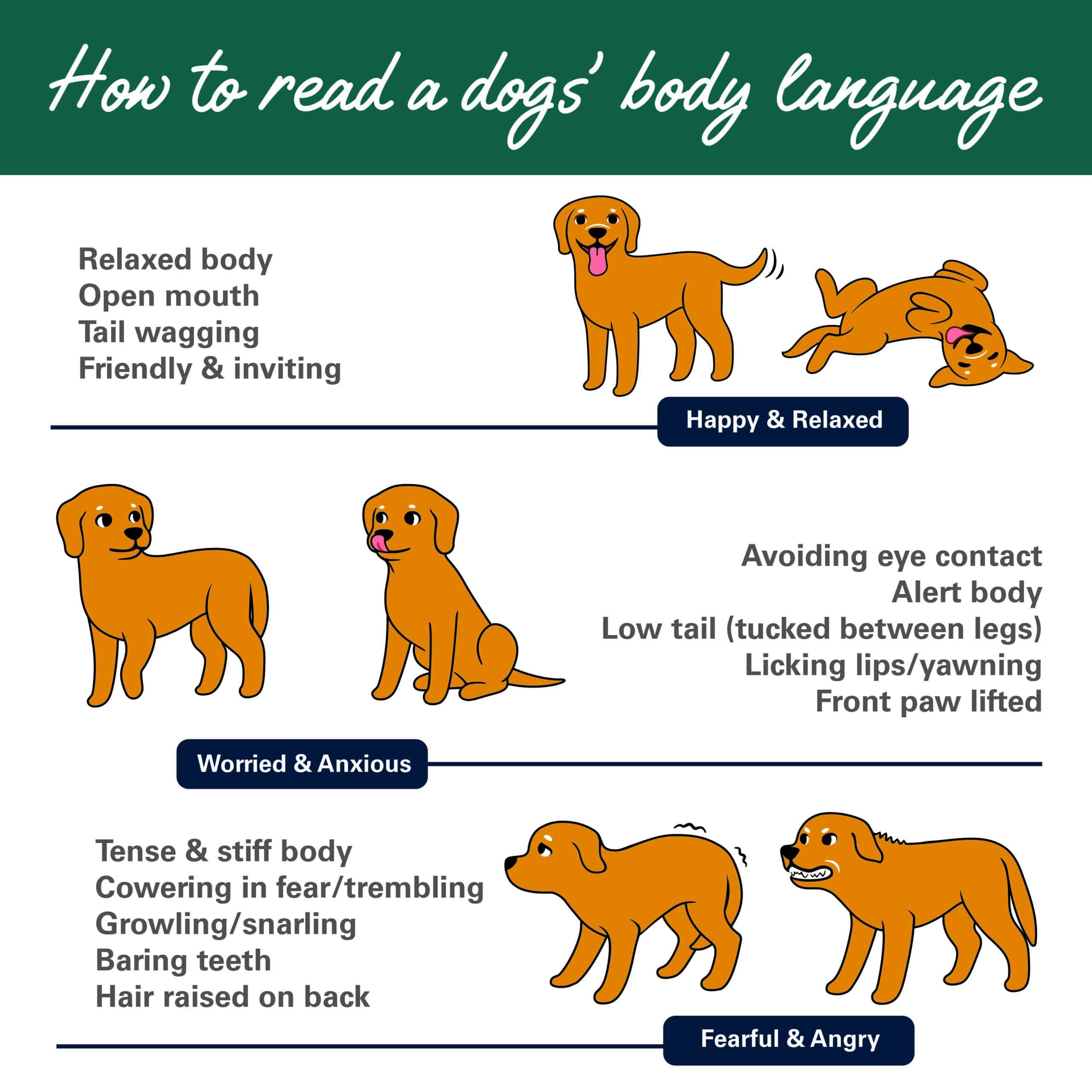Learning how to approach a dog you don’t know is an important life skill for many reasons, but for most pet lovers out there it is simply so you can enjoy them and have a pat! And learning how to read a dog’s body language is a big part of how to approach a dog safely.
How to approach a dog you don’t know
The best way to approach a dog safely is by following these steps:
- Determine if the dog wants to be patted or not by watching their body language (see below – signs of a relaxed dog vs an anxious/aggressive dog).
- As you approach, continue to watch their body language for signs of relaxation and comfort. If the dog seems anxious or aggressive, do not approach.
- Always ask the owner if it’s okay to pat their dog.
- On approach, with your palms facing outwards, let the dog approach you to sniff and touch
- Continue to watch their body language for signs of anxiousness or aggression and retreat if these now appear present
- Pat the dog underneath the neck rather than on its body or on top of its head as this can make the dog feel uncomfortable or unsure of your movements
- If the dog is showing signs of being relaxed and comfortable, move in for more pats on the rest of their body but be sure to retreat if their body language changes
How to read a dog’s body language
Knowing how to read a dog’s body language may one day save a life. Studying the diagrams and explanations below will help to identify the signs of a relaxed, anxious, or aggressive dog. It is not recommended to approach an anxious or aggressive dog and is generally considered unsafe to do so.
Signs of a relaxed dog
A relaxed dog will have a relaxed body posture (as opposed to stiff and tense). The dog’s eyes will be soft and seek eye contact, with a slightly open mouth and normal breathing. A comfortable dog will usually wag its tail with it’ whole body, or have its tail in a comfortable and relaxed position. The ears will be in a natural position (depending on the breed).
Signs of a worried or anxious dog
An anxious dog may try to avoid contact with you altogether and have an alert body. The tail will be tucked between its legs and it may have a front paw lifted, showing these behaviours all at once. The dog may lick its lips or yawn a lot, be anxious, cower/hide, and/or pace.
Signs of an anxious/aggressive dog
An anxious or aggressive dog will have a tense, stiff body with its hackles raised (giving the appearance of the hairs on the back of the dog’s body as raised). The dog may have a raised front paw, cold eyes and potentially have a look of concern characterised by dilated pupils. It is possible the dog could have ‘whale eyes’, whereby they are not quite looking at you directly but out of the corner of their eyes.
The mouth may be clinched shut with puckered lips; or, the corners of the mouth may be pulled back with wrinkles at the sides accompanied by drooling or panting (breathing will be faster). If the ears are pinned backward, it’s like the dog is stressed; if they are pushed forward, this is likely a sign of aggression. Lastly, the tail will be stiff between the dog’s legs or straight up in the air. A fast, short-tail wag will let you know that they are uncomfortable with the approach.
Read more information about dog attacks and how to prevent dog attacks, and visit our guide on dog attacks for all you need to know about protecting your pet and what to do in the event of a dog attack.
If your pet has been a victim of a dog attack, contact your closest Animal Emergency Service hospital or your local vet immediately.

